When the bells of St. John the Baptist church ring out over Armitage, they carry with them echoes of many centuries. There are now six bells in the tower at St. John the Baptist church but that has not always been the case. The earliest record available for bells at the church comes from a document of 1553.
In 1553, as part of a nationwide survey ordered by King Edward VI to catalogue church property, the church at Armitage was found to have 2 bells, 1 hand bell, and 1 sacring bell (a small bell used during Holy Communion). Figure 1, a document from May Grimley’s collection, lists the church’s bells and other items in 1553.
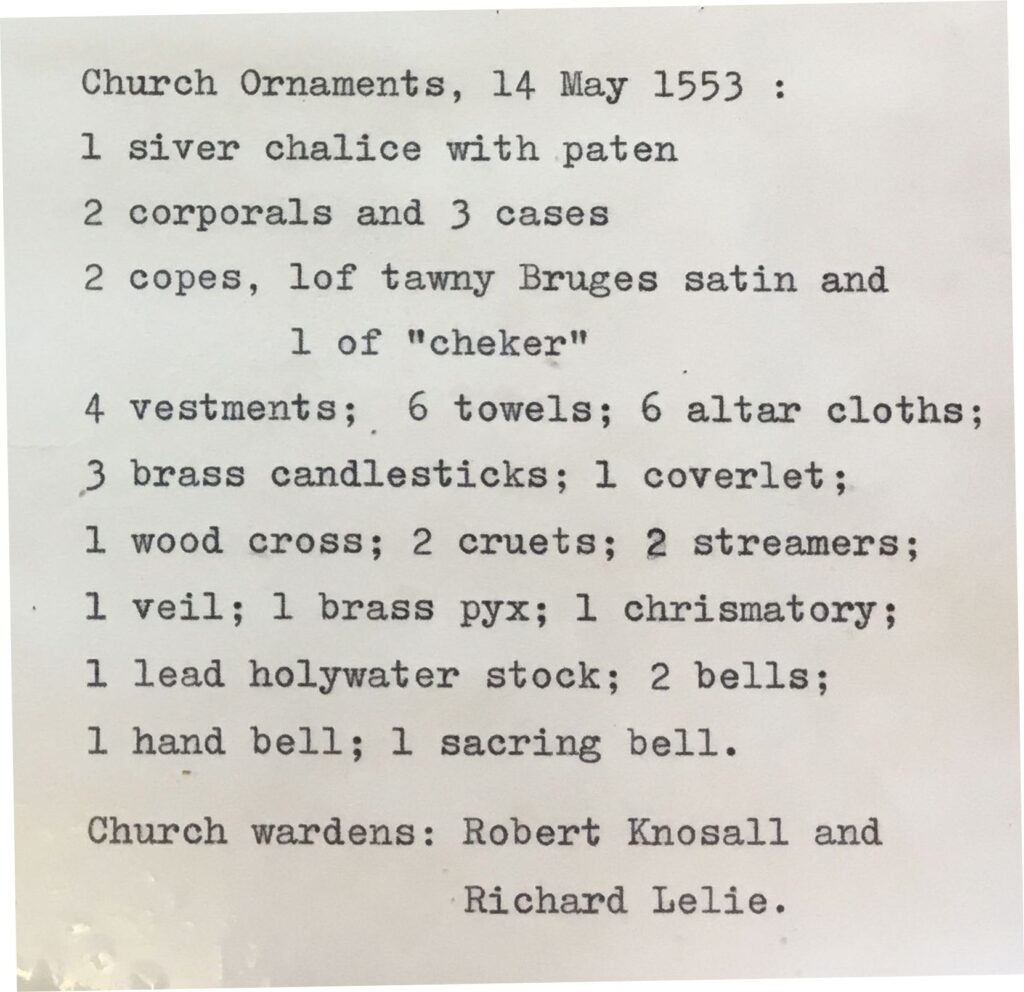
Until the 17th century bells were simply swung through an angle of 45 to 60 degrees on either side of their resting position and if there was more than one bell, it was difficult to control them to ring in a pattern. In the 1600s, churches began to adopt a new technique, hanging bells on a wheel, as depicted in Figure 2. This allowed bell-ringers to swing the bells through a full 360 degrees or even more and created a fuller and more melodic sound. The church tower was completely rebuilt in 1632 and the bells would have been re hung. It is possible that such a wheel mechanism was installed at the same time, like that used today, and the bells lasted for nearly 100 years.
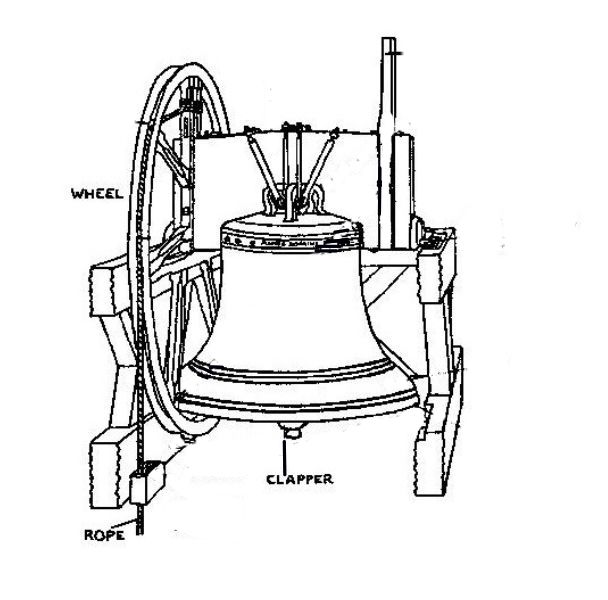
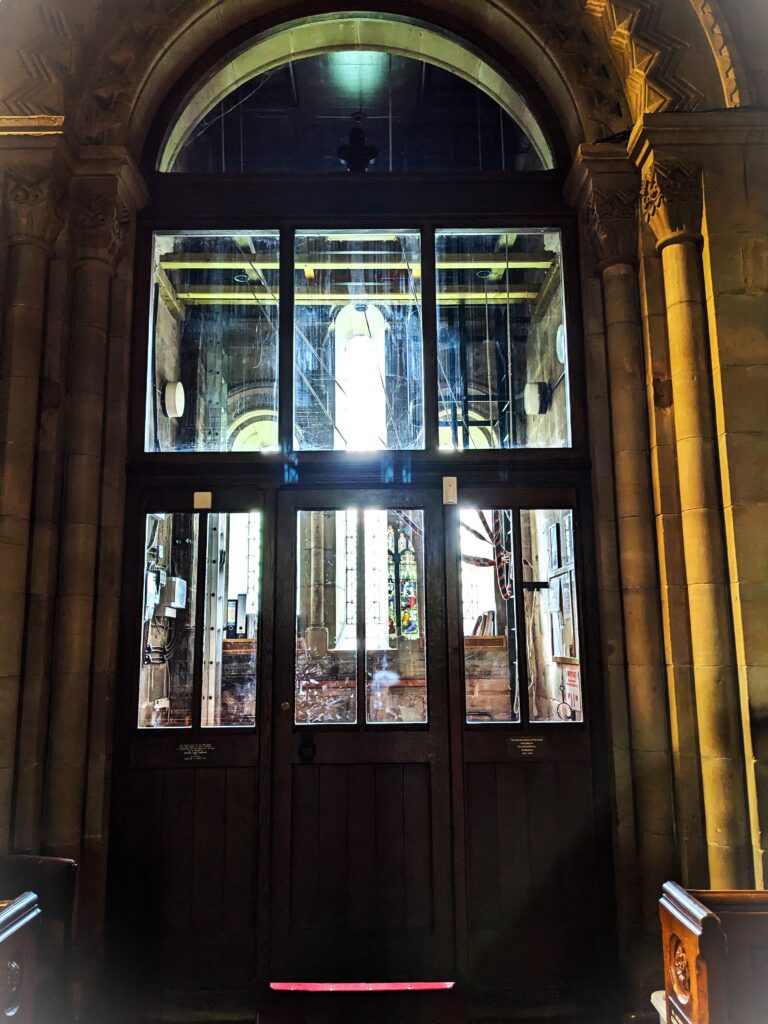
In 1727 the two bells were replaced with three new bells, made by Joseph Smith of Edgbaston, each different, sounding its own specific note, and with its own inscription. The first bell, (see Figure 4), inscribed ‘Gloria in Excelsis Dec 1727,’ weighed 276lbs and measured 24¼ inches in diameter and sounded an E. The second bell, (see Figure 5), weighed 360lbs, being 2½” wider, sounded a D, and had the inscription “William Bryan, Joseph Lycett, Churchwardens 1727”. The third bell, (see Figure 6), was heavier still being 524lbs at 30¼” diameter and sounded a C, with “I to the church the living call, And to the grave summon all 1727” inscribed on it.
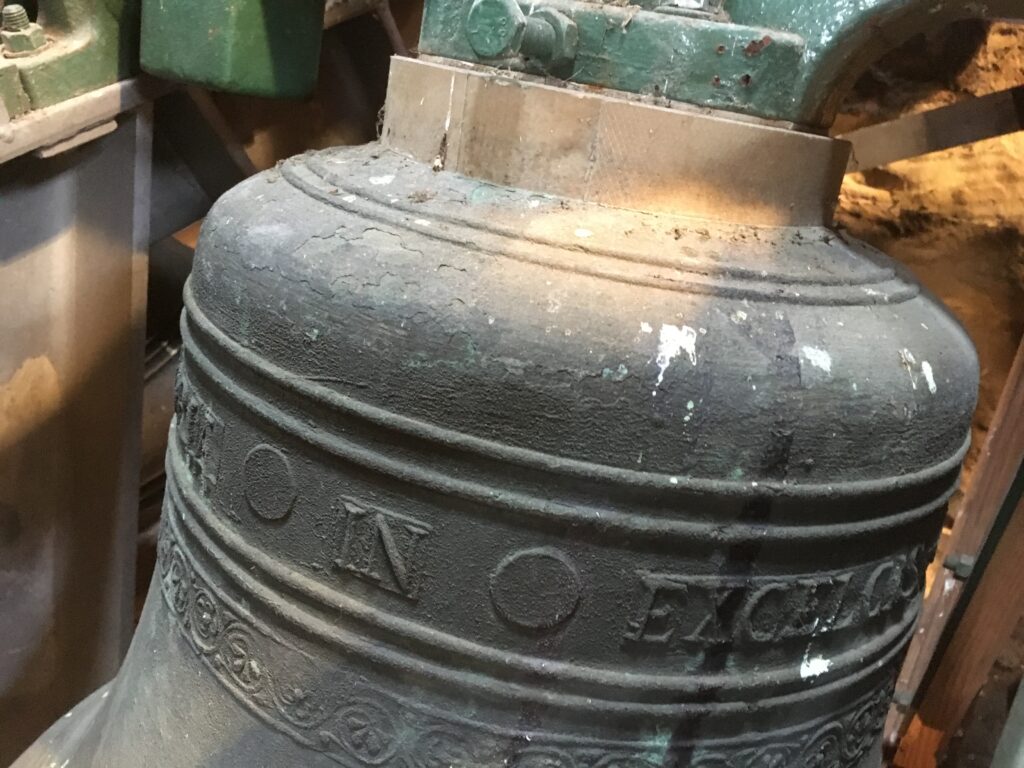
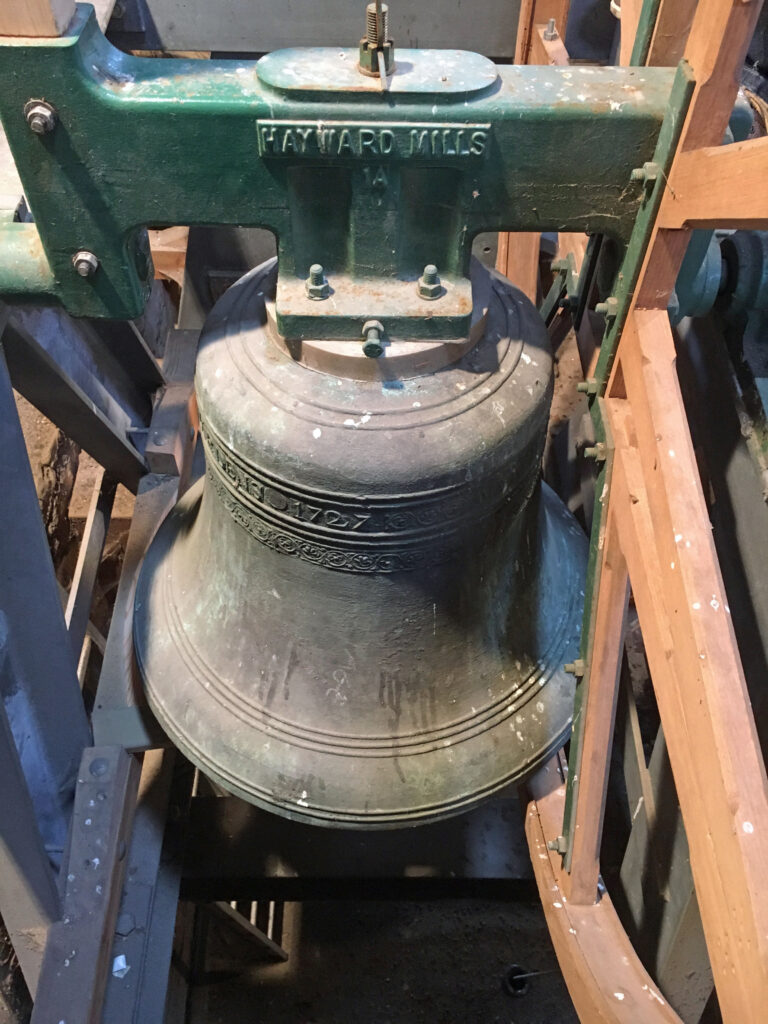
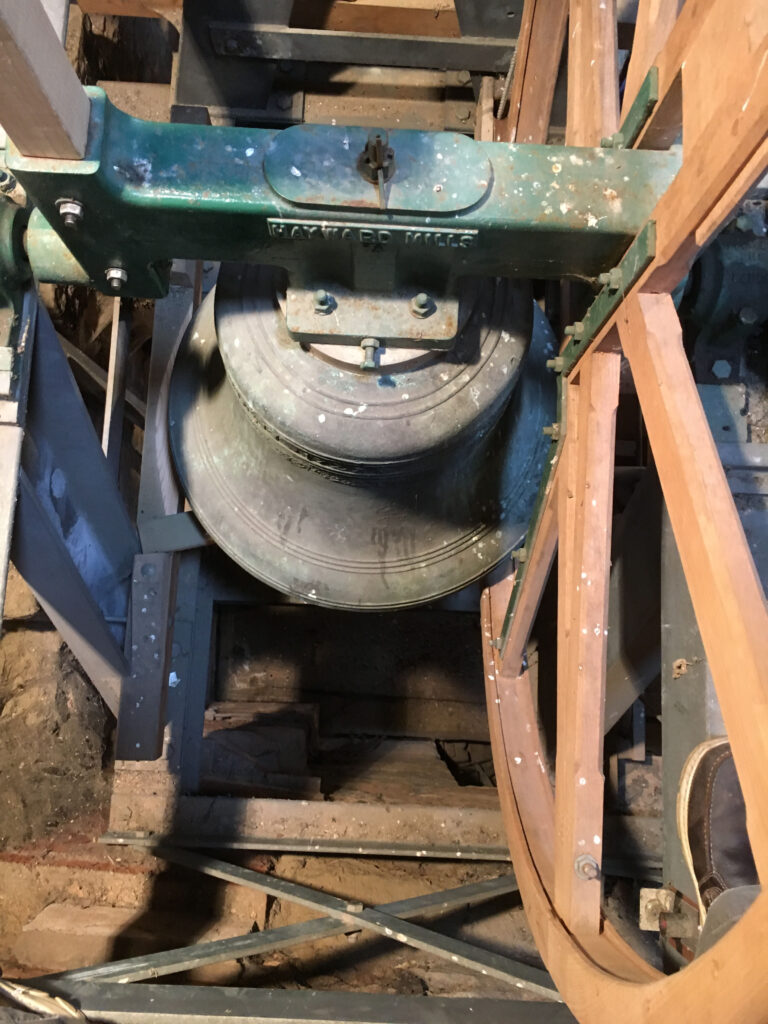
Two bells produce a very simple sound pattern. The ringing of two bells can only result in alternating sounds between the two pitches, creating a repetitive, almost monotonous rhythm. This would have been used simply for calling people to services. Adding a third bell introduces the potential for more melodic patterns and a more varied rhythm.
This can create a more interesting sound and as weddings became more of a social event in the 19th century and particularly in the Victorian era the bells were used to enhance these occasions. With the tripling of the population in the 1800s this extra use put more wear and tear on the bells and the supporting structure. In 1889 the bells needed to be re-hung – this was funded by Mrs. Birch of Armitage Lodge.
Increasing the number of bells was investigated before WW1 but the cost of the necessary structural changes to the tower and the bell frames was prohibitive. During WW1 the bells were still rung and in 1916 a clock, linked to the bells so that they rang every hour, was installed in the tower in memory of Arthur Legge Samson, the Rector’s son who was killed in the war. The bells were not rung to celebrate the end of the war although Armistice Day was celebrated by handbells being rung in the garden outside Armitage Cottage (opposite where the Londis store is now).
During WW2 the bells were completely silent as they were only to be rung in the event of an invasion and in the late 1940s the bells again fell silent. It wasn’t until 1954 that the bell frames were renewed and stonework on the tower was restored making it safe to ring the bells once more.
By 1987 the frames were again at the point at which the bells could not be rung. The Millennium Commission, established in 1993, set up the Millennium Fund for Church Bells in 1997 aiming to help restore and refurbish church bells across the UK as part of the celebrations for the year 2000. The idea behind this was that churches could ring out the year in style to mark the year 2000.
This initiative prompted the setting up of St. John’s Millenium Club with the aim of not only repairing the bell frame but also adding new bells.
With three bells the number of possible ringing patterns (or changes) is 6 whilst six bells would mean that 720 changes are possible. The extra bells means that a greater variety of rhythms and patterns can be played, creating a more complex sound. The more bells there are the greater the need for skilled and coordinated bellringers. Since there are many more changes possible, it demands more precision in timing, focus, and teamwork and, of course, much more training. To get an idea of this here is a video of 6 bells being rung.
Estimates for the work varied widely because the number of extra bells was initially left open. Once the total number of bells was settled as 6 the estimates came in at around £30,000. The hope was that half of that would be raised by St. John’s Millenium Club and the other half would come from the Millenium Fund.
The entire village was leafleted and letters were written to trusts, firms and organisations. Concerts and coffee mornings were held and stalls were taken at events in the surrounding area. Even the Parish Council donated £1000. But the Millenium Fund rejected the application for a grant. Fortunately at this point new volunteers were found with new ideas and enthusiasm and members of the bell ringing community also stepped forward to help.
The main new idea put forward was that the new bells could be sponsored for £4,000 and that resulted in two of the bells being sponsored. One, the Treble bell, was dedicated to Clarice and Eddie Sharples – see Figure 7. A second bell – Figure 8 – was dedicated to the family of Georgina Thomas, Rector David Thomas’ wife – Edward, Winifred and Mark Coe. Georgina’s brother, Colonel Mark Edward Coe OBE had been murdered by the IRA in 1980, aged 44. The final bell, Figure 9, was inscribed “These bells ring through those who gave and those who were remembered 2001” – dedicated to all those who had asked for their donation to go towards a bell.
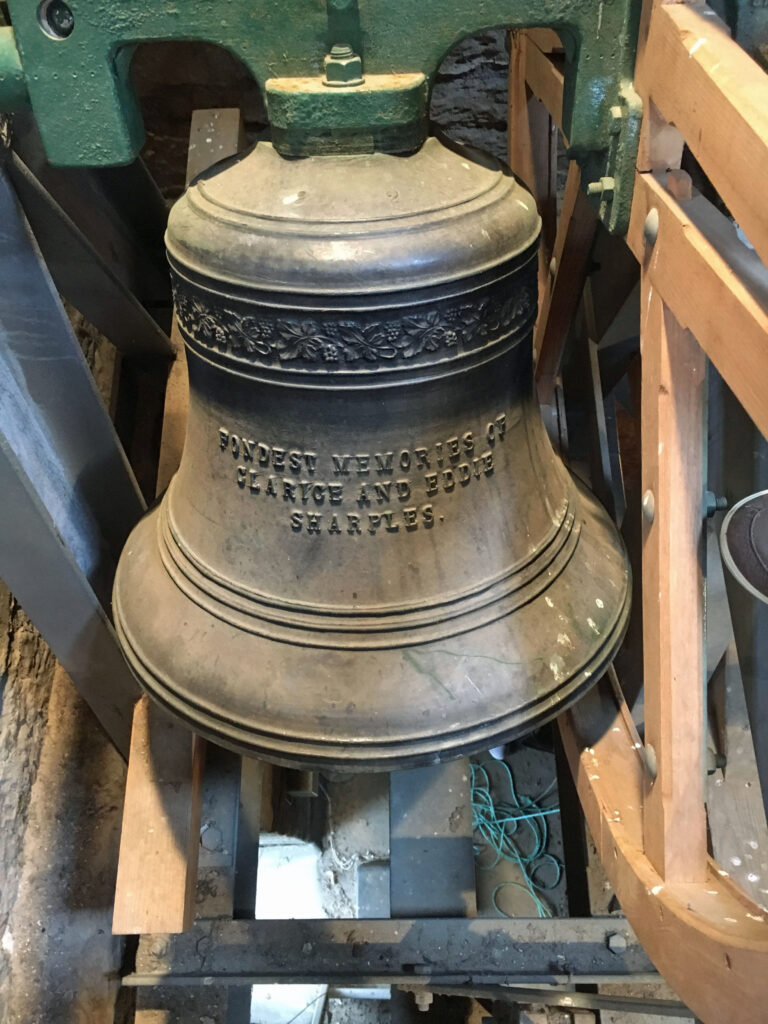
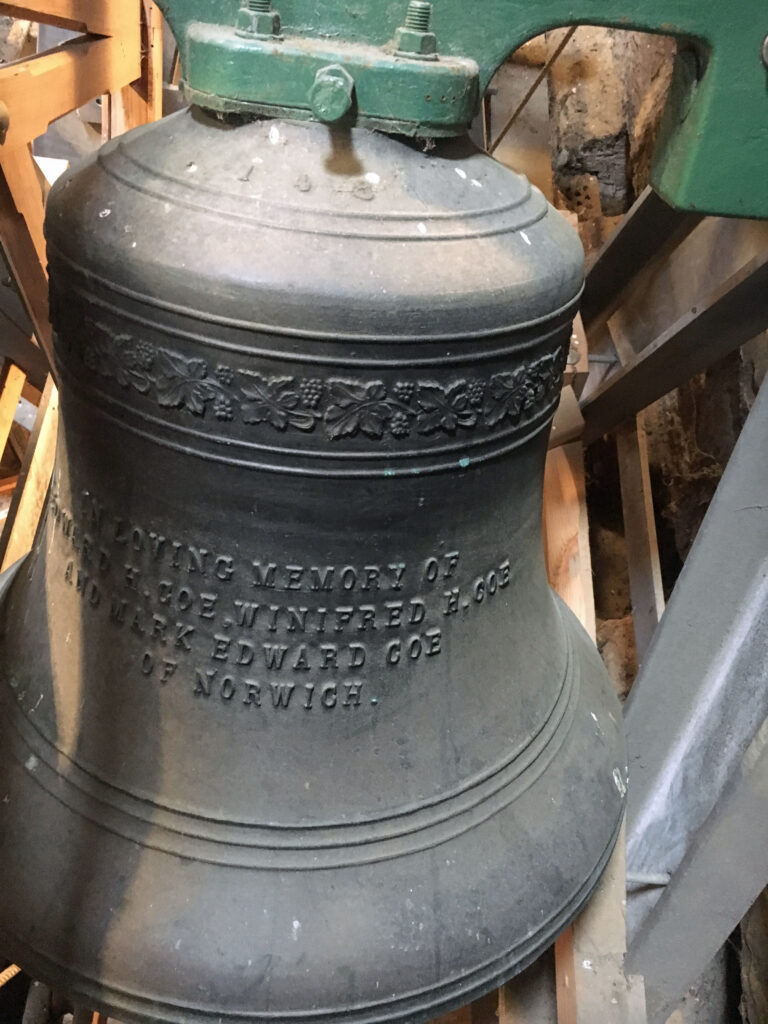

In April 2001 three new bells were cast at John Taylor Bellfounders Ltd. at Loughborough. They weighed between 242lbs and 294lbs with varying diameters – 21”, 22” and 23½” – giving A, G and F respectively when rung. The following week the existing three bells were removed and sent to Hayward Mills in Nottingham who were responsible for the restoration. In July the new frame was installed and the following month heard the six bells rung for the very first time. The frame and bells were dedicated by the Bishop of Lichfield in October 2001.
On Sunday 11th November 2001 the first Peal of the bells was rung, half muffled on Remembrance Day. A Peal of bells is a full performance where a sequence of changes (different ringing patterns) is rung. The Peal rung was 5040 Doubles in 11 methods and took 2 hrs 23 mins. The bellringers were
- Treble Philip W Gay
- 2nd bell Colin Aked
- 3rd bell Andrew C Ogden
- 4th bell Elizabeth Hutchieson
- 5th bell Stuart C W Hutchieson
- Tenor Steve Woodjetts
The church bells are now set up with a simulator which allows the bell ringers to practice without disturbing the community particularly when training new learners or for night time practice. The bells are set up so that they are still physically rung by the bell ringers but as can be seen in Figure 10 below the striker is prevented from hitting the bell – sensors are used and a computer program “rings” the bell.
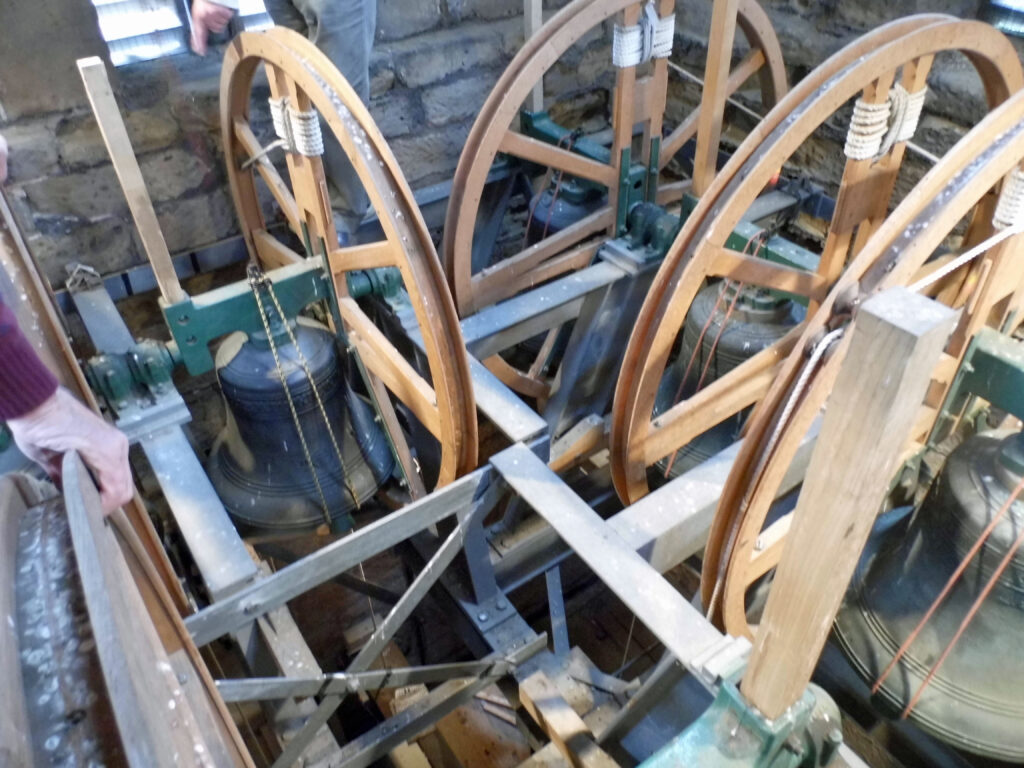
Peals are now regularly rung and the sound of the bells will ring out over the village for many years to come.
